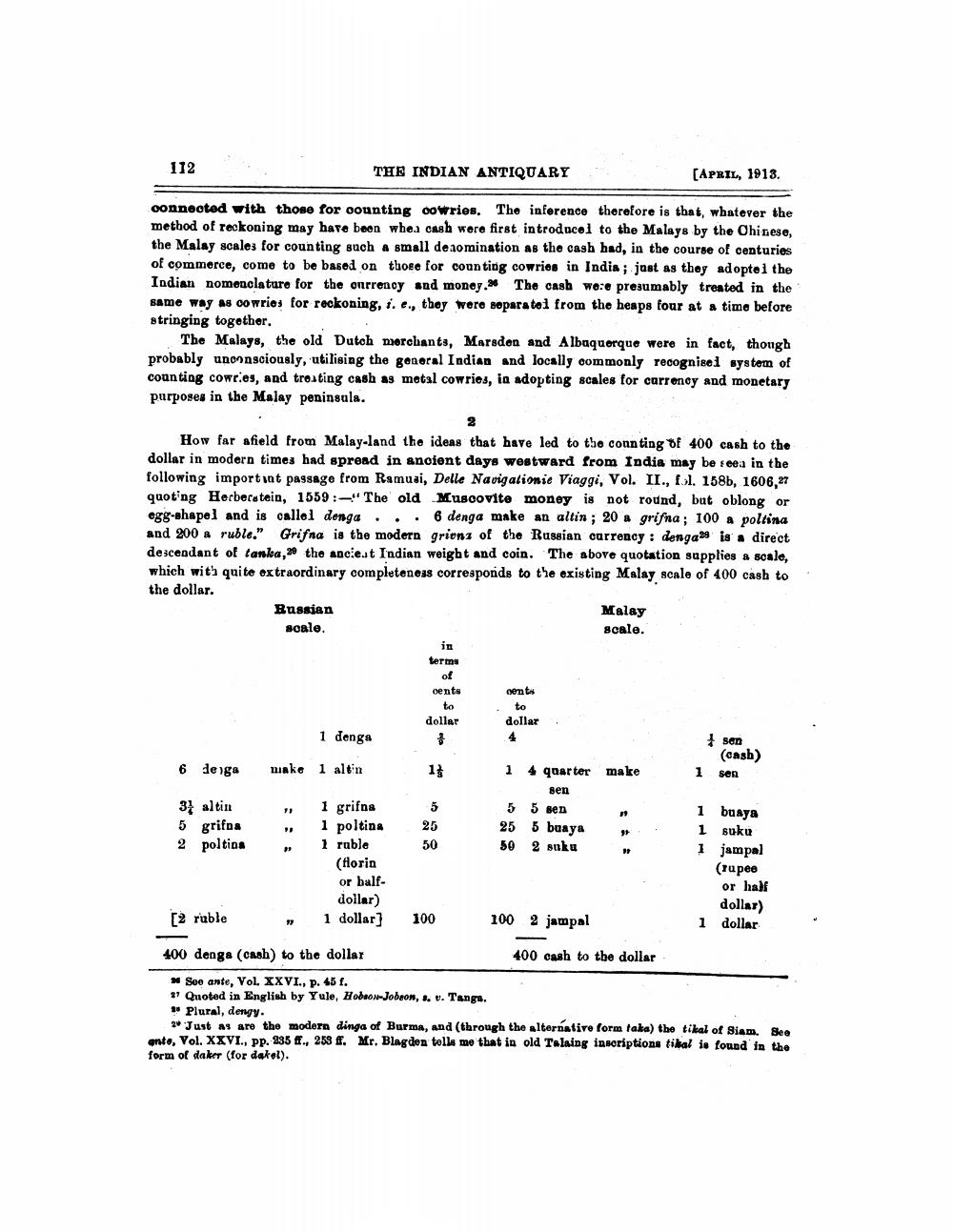________________
112
THE INDIAN ANTIQUARY
[APRIL, 1913.
connected with those for counting cowries. The inference therefore is that, whatever the method of reckoning may have been whea cash were first introduced to the Malays by the Chinese, the Malay scales for counting such a small denomination as the cash had, in the course of centuries of commerce, come to be based on those for counting cowries in India ; just as they adoptel the Indian nomenclature for the onrrency and money. The cash were presumably treated in the same way as cowrio: for reckoning, i. e., they were separatel from the heaps four at a time before stringing together.
The Malays, the old Dutch merchants, Marsden and Albaquerque were in fact, though probably unoonsciously, utilising the general Indian and locally commonly recognisel system of counting cowries, and treating cash as metal cowries, in adopting scales for carrency and monetary purposes in the Malay peninsula.
How far afield from Malay-land the ideas that have led to the connting of 400 cash to the dollar in modern times had spread in ancient days westward from India may be see in the following important passage from Ramusi, Delle Navigationie Viaggi, Vol. II., Col. 158b, 1606,27 quoting Herberstein, 1559:-"The old Muscovite money is not round, but oblong or egg-shaped and is callel denga... 6 denga make an altin ; 20 a grifna; 100 a poltina and 200 a ruble." Grifna is the modern grions of the Russian currency : denga” is a direct descendant of tanka, 2 the ancient Indian weight and coin. The above quotation supplies a scale, which with quite extraordinary completeness corresponds to the existing Malay scale of 400 cash to the dollar.
Russian soale.
scale.
Malay
terms
oents
cents
to
dollar
dollar
1 denga
sen (cash)
6
deiga
make l altin
1
sen
37 altin 5 grifos 2 poltios
1 4 quarter make
sen 5 5 sen 25 5 buaya 59 2 Buku
50
1 grifna 1 poltina 1 rable
(florin or balf
dollar) 1 dollar]
1 buaya
buku 1 jampal
(rupee or haki
dollar) 1 dollar
[2 ruble
–
100
100
2 jampal
400 denga (cash) to the dollar
400 cash to the dollar * See ante, Vol. XXVI., p. 45 f. *Quoted in English by Yule, Hobson-Jobeon, . v. Tanga. * Plural, dengy.
20 Just nu are the modern dinga of Burma, and (through the alternative form taka) the tikal of Siam. See anto, Vol. XXVI.. Pp. 235 ff., 259 ff. Mr. Blagdon tells me that in old Talaing inscriptions tidal is found in the form of daker (for detal).




